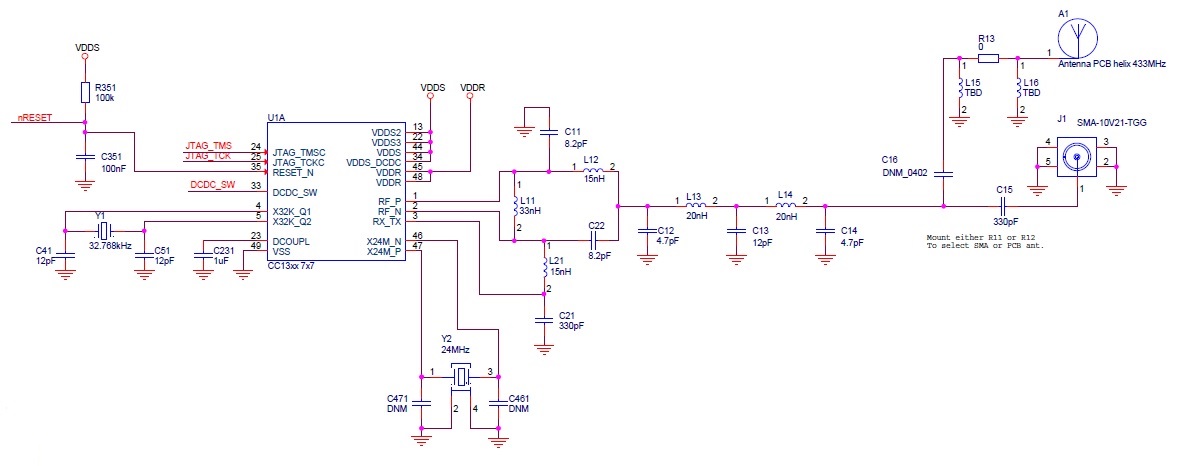Hi all,
I am trying to design my own pcb based on the CC1310 wireless MCU from TI. I am using it for 433MHz communication. I want to use a helical wire antenna for my application.
There is too much info out there and seems like every website/article talks about a different thing and I am really confused about what are the PCB requirements. I want to achieve a max transmission range of about 150 metres.
Here are my questions:
1. I read that a 4 layer PCB is recommended because I have an entire layer as the ground plane. But is this really necessary? A 4 layer PCB will add to the manufacturing cost.
2. I read that the antenna needs to have a certain clearance from the ground plane. How do I know how much clearance I need? And I never see this large empty space in those compact RF modules. So is it really necessary?

3. A PI matching network is recommended and a 50 ohm PCB track should be connected to the antenna. Where should the 50 ohm PCB track start from?

Should the 50 ohm line start from after L14? Or after C16?
I am trying to design my own pcb based on the CC1310 wireless MCU from TI. I am using it for 433MHz communication. I want to use a helical wire antenna for my application.
There is too much info out there and seems like every website/article talks about a different thing and I am really confused about what are the PCB requirements. I want to achieve a max transmission range of about 150 metres.
Here are my questions:
1. I read that a 4 layer PCB is recommended because I have an entire layer as the ground plane. But is this really necessary? A 4 layer PCB will add to the manufacturing cost.
2. I read that the antenna needs to have a certain clearance from the ground plane. How do I know how much clearance I need? And I never see this large empty space in those compact RF modules. So is it really necessary?

3. A PI matching network is recommended and a 50 ohm PCB track should be connected to the antenna. Where should the 50 ohm PCB track start from?

Should the 50 ohm line start from after L14? Or after C16?



